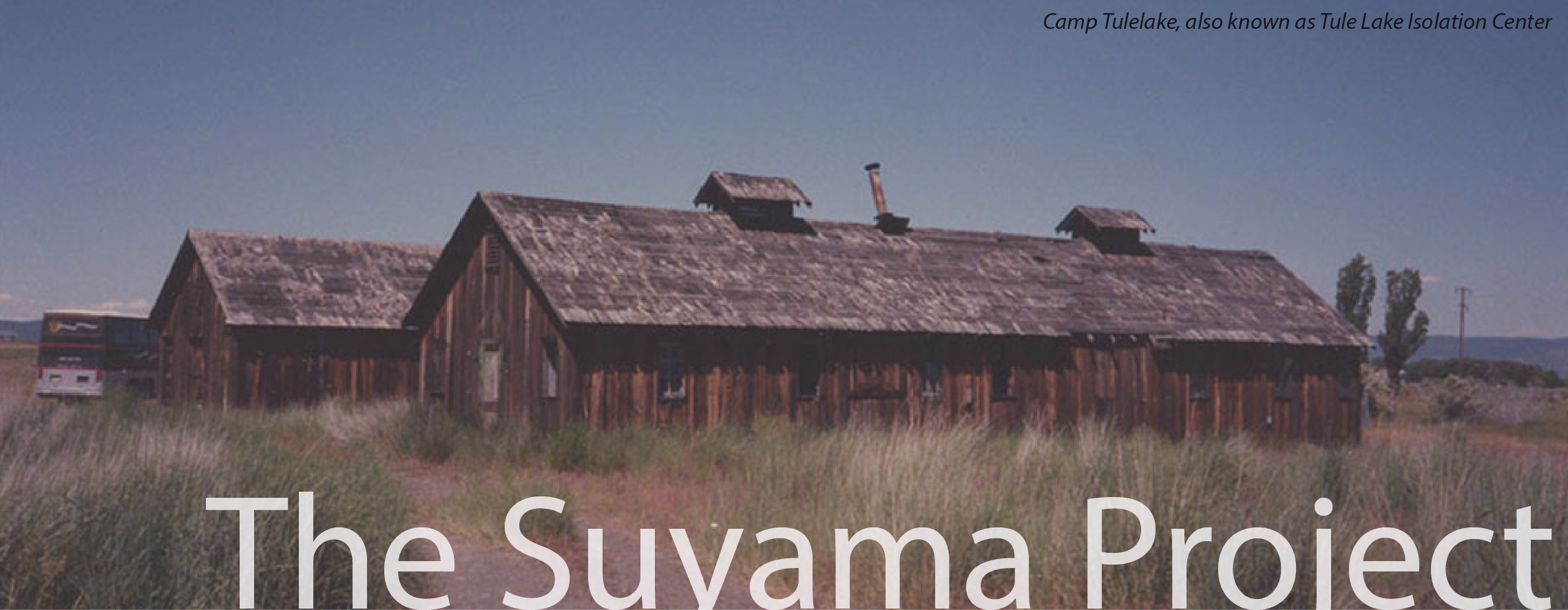
|
UCLA Asian American Studies Center's Suyama Project aims to preserve the history of Japanese American resistance during World War II, including, but not limited to the 100th/442nd Regimental Combat Team draftees, Army and draft resisters, No-Nos, renunciants, and other Nikkei dissidents of World War II. The Suyama Project is made possible through the generous gift of an anonymous donor who wanted to honor and remember the legacy of resistance, broadly understood. |
Category Archives: Block 42 Conscientious Objectors During World War II, there was only a handful of Japanese American conscientious objectors (CO). Unlike Japanese American draft resisters who were willing to serve in the armed forces once their rights were restored, COs refused combat service on grounds of freedom of thought, conscience and/or religion.
The most famous Japanese American CO is Gordon Hirabayashi, who not only refused military service but ignored orders to report to a Civilian Public Service (CPS) camp for COs due to his belief that laboring at a CPS camp still contributed to the government's war machine.
Another well-known Japanese American CO is George Yamada, who reported to CPS Camp 21 in Cascade Locks, Oregon, on December 5, 1941, two days before Japan attacked Pearl Harbor. When the U.S. government issued orders to incarcerate all people of Japanese descent living on the West Coast into camps, the Selective Service and the War Relocation Authority (WRA) ordered Yamada to be discharged from the CPS camp and transferred to a WRA camp.
However, Mark Schrock and others at the CPS camp protested Yamada's removal and threatened to participate in non-violent acts if Yamada was forcibly taken away. On June 30, 1942, CPS Camp 21 President Charlie Davis sent a letter to 40 other CPS camps, noting that the 200 and some men at Camp 21 were opposed to racial discrimination and urged the government to rescind orders to send Yamada to a WRA camp.
The WRA relented and had Yamada sent to an inland CPS camp in Colorado Springs, Colorado, where Yamada would be out of the military restricted zone for Japanese Americans.
After the war, Yamada moved to Canada where he published Rikka, a magazine that promoted non-violence.
Another CO, Toshiyuki Fukushima, like Yamada, registered for the draft before the war but once the war started, he was sent to a WRA camp with his family. In 1943, he received clearance to leave camp and received his draft notice while working as a draftsman at Kellett Aircraft Corp on the East Coast.
Fukushima petitioned for and was granted CO status and was ordered to report to a CPS camp. After V-J (Victory over Japan) Day in August 1945, Fukushima requested a transfer to a veterans' psychiatric hospital in Lyons, N.J. After a few months, however, Fukushima had seen enough and walked away from his duties. He was picked up and appeared in court but never served jail time since the judge concluded that Fukushima had done enough time at the WRA and CPS camps.
In early 1946, two Japanese Americans — Jyuichi Sato and Andrew Shiga — were among 83 strikers who participated in one of the longest work strikes in CPS camp history to protest racial segregation. Among the attorneys involved in representing the defendants was A.L. Wirin, who worked with the Japanese American Citizens League and also handled the Heart Mountain Fair Play Committee leaders' trial during the war.
The Civilian Public Service website lists seven Japanese Americans who were COs during World War II but does not list Hirabayashi. Additionally, there were two or three others with Japanese-sounding names on the list but their ethnicity could not be confirmed at this time. |